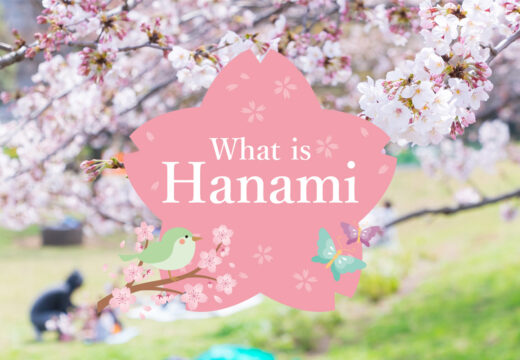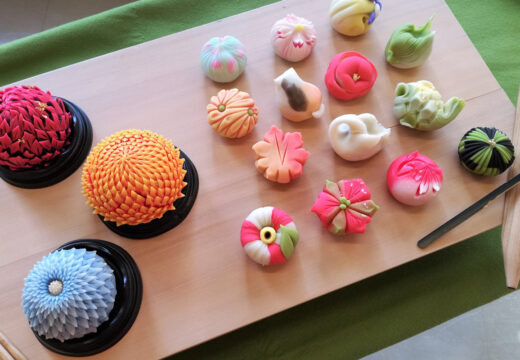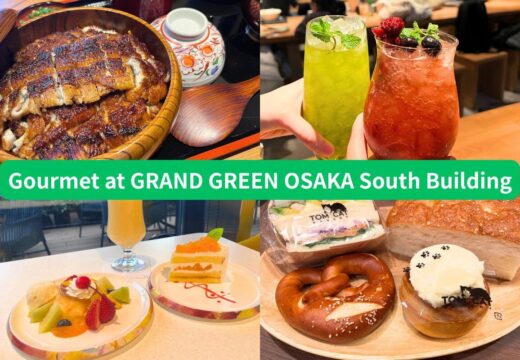3 Things Japanese People Eat and Drink at New Year’s
Category: Food&Drink Japanese culture Seasons

In Japan, there are special foods that are eaten on New Year’s Day.
This time, I will introduce three carefully selected ones.
1.Osechi(おせち)
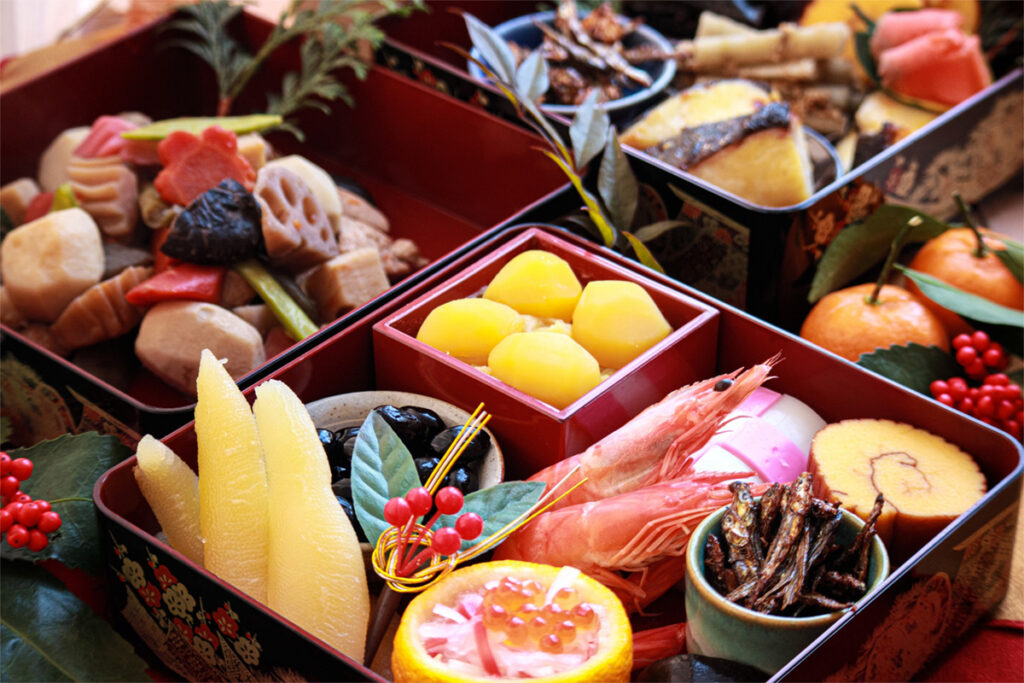
Osechi (food served during the New Year’s Holidays) is a square bento box-like container filled with a variety of dishes.
Osechi-ryōri (御節料理, お節料理 or おせち) are traditional Japanese New Year foods. The tradition started in the Heian period (794–1185). Osechi are easily recognizable by their special boxes called jūbako (重箱), which resemble bentō boxes. Like bentō boxes, jūbako are often kept stacked before and after use.
(Osechi|Wikipedia)
A multi-layered box is used for this purpose, as it means “to pile up blessings”.
It was originally an offering to the gods.
Although it varies from region to region, recently we often see three-tiered Osechi.
There’s a meaning behind every single dish!
Kazunoko 数の子(herring roe)
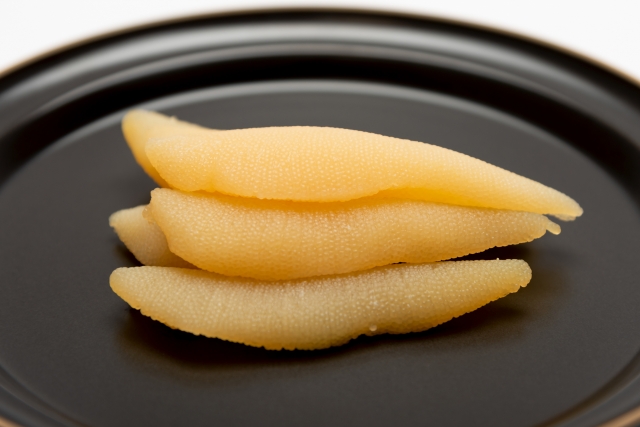
It is considered to be a food of prosperity and good luck for descendants.
konbu 昆布
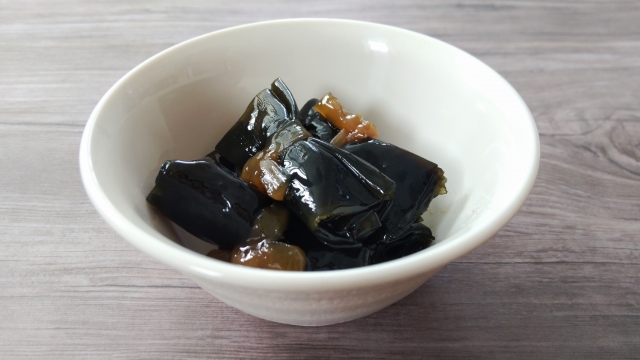
Konbu is edible kelp mostly from the family Laminariaceae and is widely eaten in East Asia.
It is pronounced “konbu” in Japanese, which is similar to the word “yorokobu(be glad),” and is therefore considered to be good luck.
Kuromame 黒豆 (black soy bean)

Sweetly cooked black beans. The color black has long been believed to ward off evil. It is also associated with the wish to live a diligent and healthy life, as it means “to work so hard that you become black and tan.
Kamaboko かまぼこ(processed fish paste)
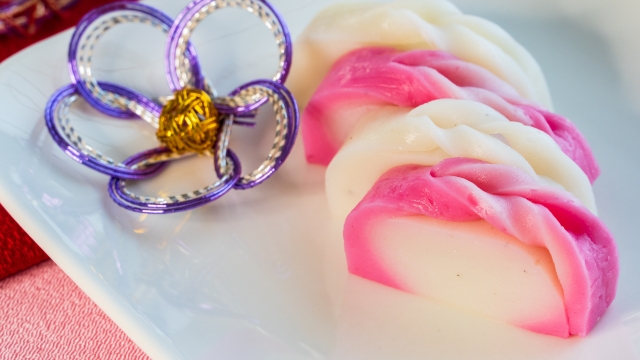
Red means to ward off evil and white means to be pure.
Kurikinton 栗きんとん(mashed sweet potatoes with sweetened chestnuts)

It is a lucky charm that is compared to golden treasure and is believed to bring good luck.
The sweetness of this dish makes it very popular among children.
2. Ozoni(お雑煮)
A soup containing rice cakes is called “ozoni”.
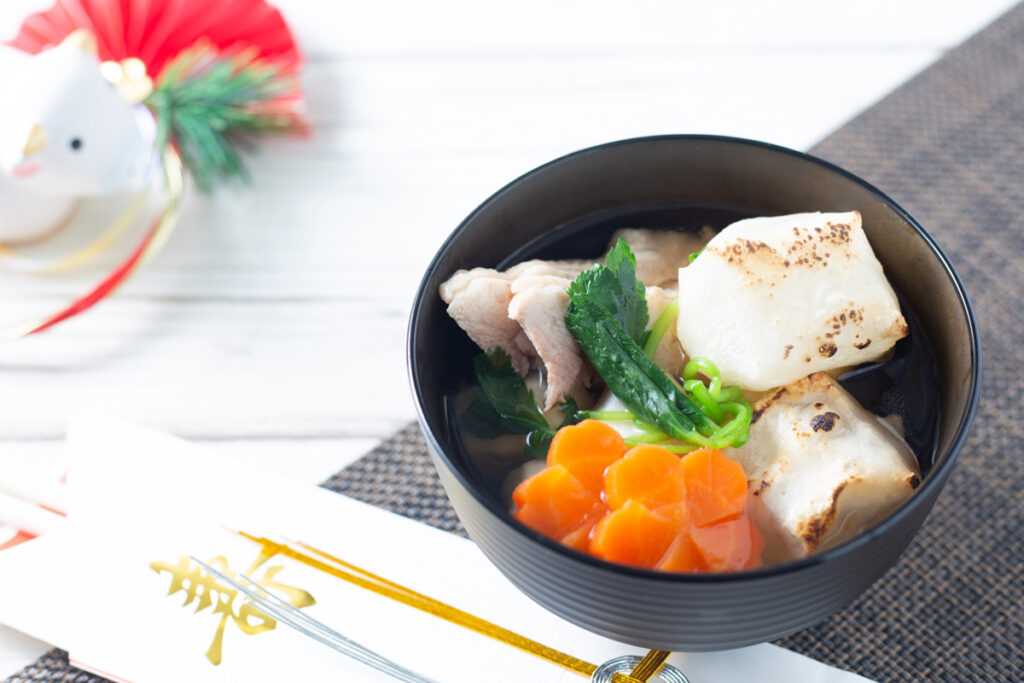
Originally, there was a custom in Japan to offer rice cakes to the gods at New Year’s, and the rice cakes were boiled and eaten, which led to the eating of Ozoni at New Year’s.
In the old days, there were many farmers, so they were thankful that they were able to harvest food safely last year, which is connected to praying for a good harvest and family safety this year.
In fact, the seasoning differs completely in each region of Japan.
Living in the Kansai region, I eat white miso ozoni every year.
It has a slightly sweet and gentle taste.
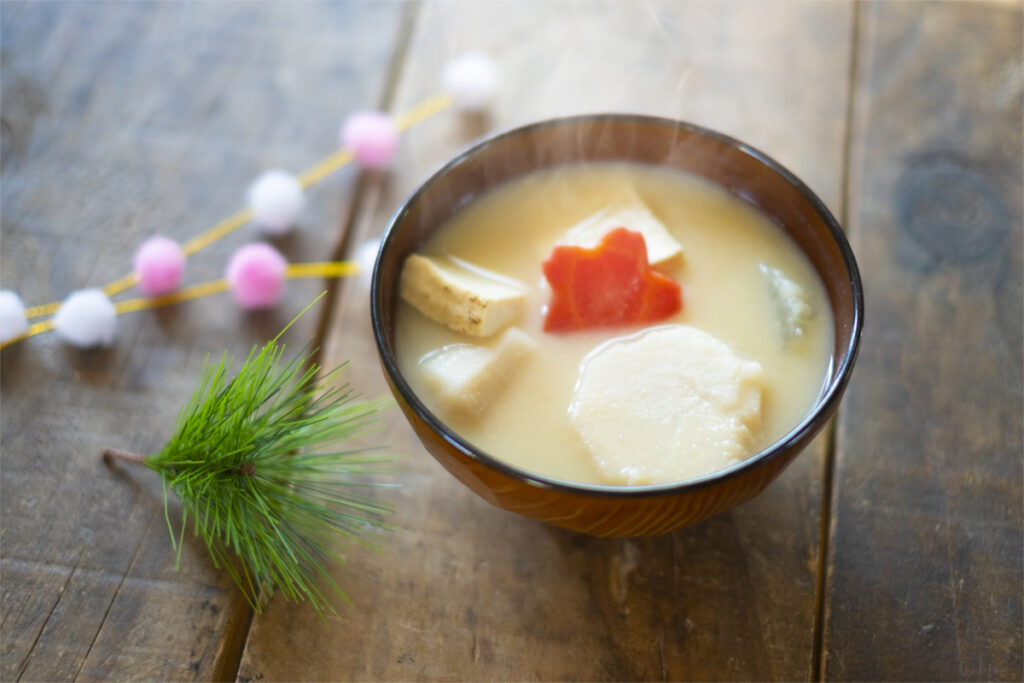
My friend lives in the Kanto area, and she said they eat ozoni with dashi broth and soy sauce seasoning. So simple!
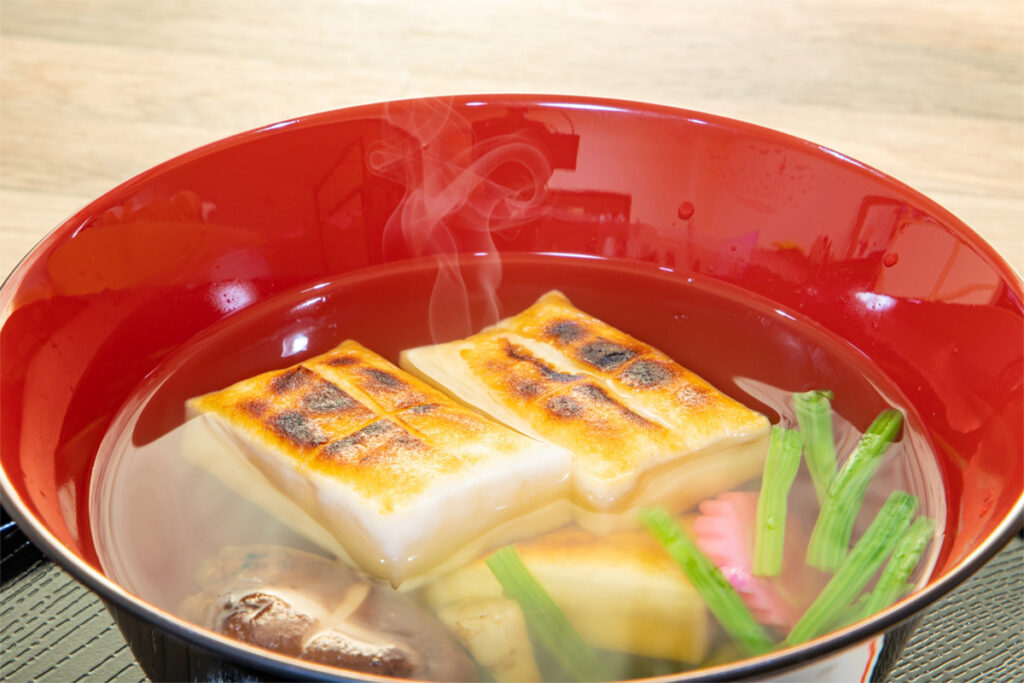
3.Otoso(おとそ)

At New Year’s, we drink sake to pray for good health, and the sake we drink at this time is called “Otoso”.
In the past, sake was made by soaking various ingredients in it.
Now it is just sake .
Sake is delicious even when it is warmed.
You can smell the fruity aroma of the rice with the steam, and taste it slowly.
Any type of sake can be heated and drunk, but the richer types of sake will bring out more flavor.
The last time I asked a store owner who created a sake website for overseas…
Harushika Super Dry Junmai Sake
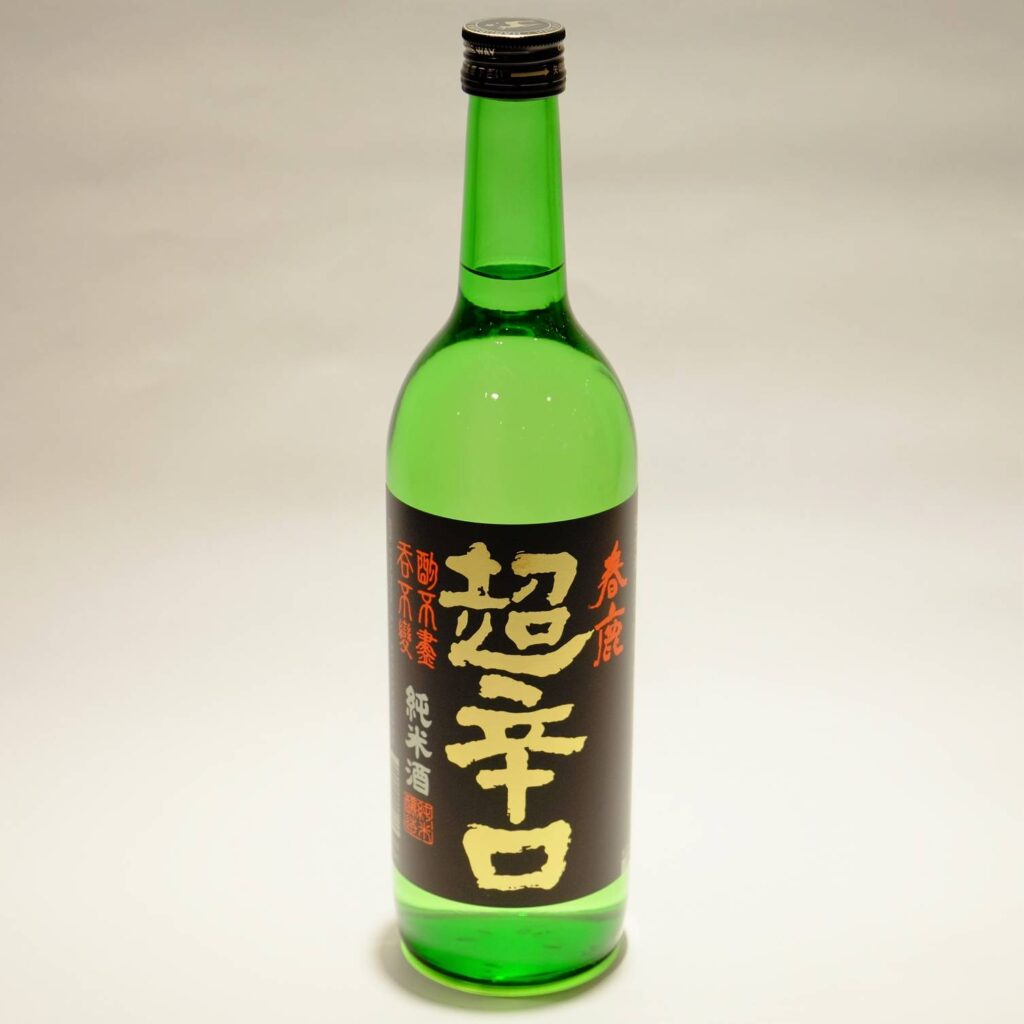
https://momotaro.hako-bu.net/product/5057
It is clear and refreshing to drink.
Yamatsuru Special junmai Mecha Spicy
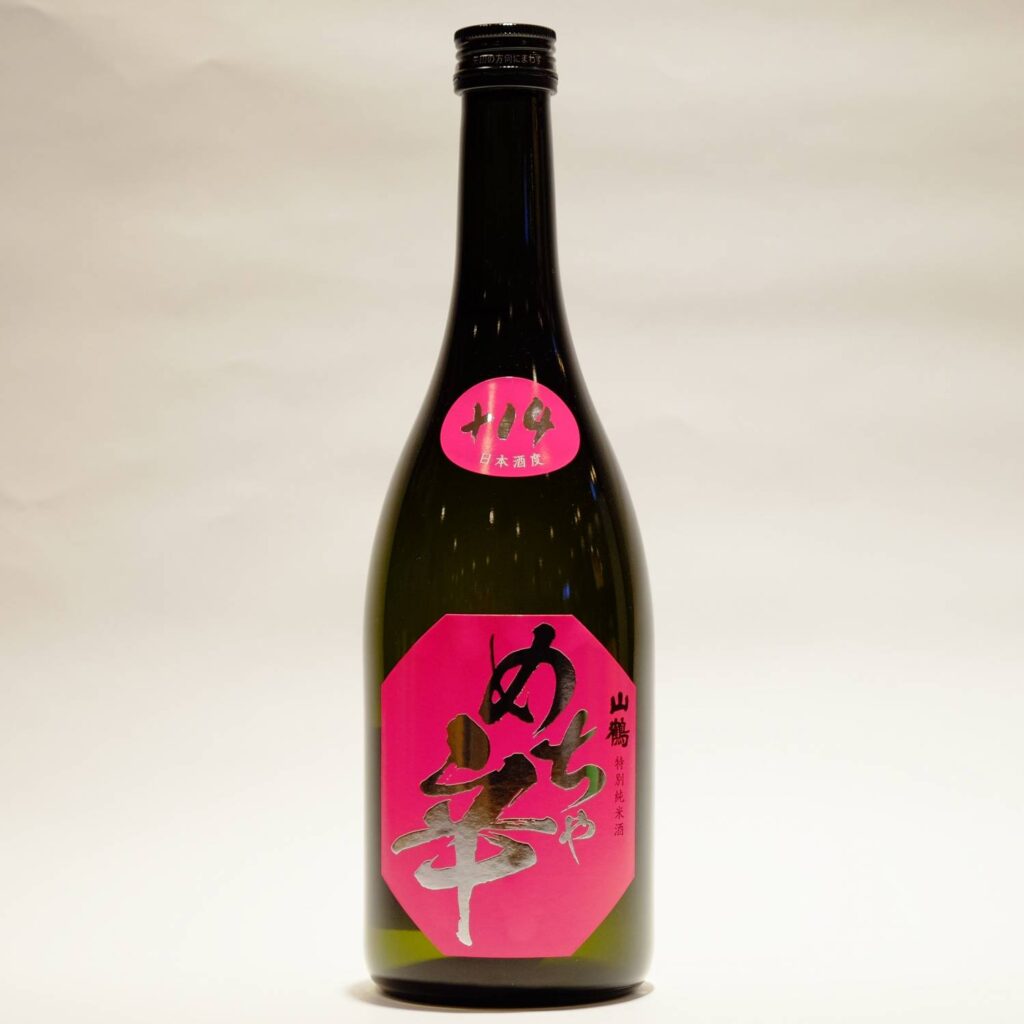
https://momotaro.hako-bu.net/product/5023
I was told that the “Super Dry” ones are delicious.
The temperature at which you heat it up depends on your preference, but a lukewarm temperature of 30~40 degrees Celsius will allow you to taste the sweetness and richness of the drink, while a temperature of about 50 degrees Celsius will allow the alcohol to stand out.
Did you find any that you would like to try?
Did you find any that you would like Japanese New Year’s has a variety of foods, decorations, and customs that are very interesting.
This time, I introduced some foods, but did you find any that you would like to try?
Did you find anything you want to try? I’d love to hear about it on Facebook!
Kodawari Times Facebook





